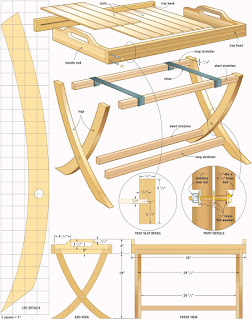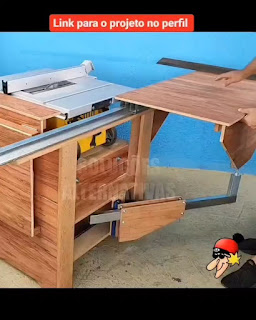Unlock Your Inner Craftsman: A Deep Dive into DIY Woodworking
Hey there, fellow woodworking enthusiasts! So you're itching to build something amazing with your own two hands? Fantastic! Woodworking is incredibly rewarding, and whether you're a complete beginner or have a few projects under your belt, there's always something new to learn. This guide is designed to be your comprehensive resource, walking you through everything from planning your project to the final sanding. Let's get started!
Choosing Your First Project: Starting Small is Smart
The biggest mistake beginners make is jumping into something overly ambitious. You don't want to be staring at a half-finished, frustrating project for months. Instead, start with something manageable, something that will give you a sense of accomplishment without overwhelming you. Think simple, functional pieces:
Perfect Beginner Projects:
- A simple shelf: This teaches you about measuring, cutting, and assembling. Plus, you'll actually *use* it afterward!
- A small birdhouse: A charming project that lets you practice precise cuts and learn about joinery (though you can get away with basic nails or screws at first).
- A cutting board: A great way to learn about finishing and working with different types of wood.
- A picture frame: Helps you practice accurate miter cuts and assembly.
Once you've completed a few small projects, you'll build confidence and gain the skills needed to tackle more complex designs. Remember, the journey is just as important as the destination!
Gathering Your Tools: The Essentials and Beyond
You don't need a full woodworking shop to get started. But having the right tools makes the process much easier, safer, and more enjoyable. Here's a basic list:
Essential Tools for Beginners:
- Measuring Tape: Accuracy is key! Get one that's at least 25 feet long.
- Pencil: For marking your cuts and designs.
- Hand Saw: A good starting point for learning basic cuts. A fine-tooth saw is best for cleaner cuts.
- Safety Glasses: Always protect your eyes! This is non-negotiable.
- Claw Hammer: For driving nails (if you're not using screws).
- Screwdriver Set: Both Phillips and flathead are essential.
- Sandpaper: Various grits (from coarse to fine) for smoothing surfaces.
- Wood Glue: A crucial element for strong joints.
- Clamps: Essential for holding pieces together while the glue dries.
Gradually Expanding Your Tool Collection:
As you progress, you might want to consider adding these tools to your arsenal:
- Circular Saw: For faster, more accurate cuts than a hand saw.
- Drill Press: For creating precise holes.
- Router: For shaping edges and creating intricate details.
- Planer: For smoothing rough lumber and creating uniform thickness.
- Jigsaw: For making curved cuts.
Remember to research each tool thoroughly before purchasing, focusing on quality and safety features.
Choosing Your Wood: Understanding Different Types
Wood comes in a huge variety, each with its own unique properties. For beginners, I recommend starting with softer woods that are easier to work with:
Beginner-Friendly Wood Types:
- Pine: Affordable, readily available, and relatively easy to cut and shape.
- Basswood: Very soft and smooth, ideal for carving and intricate projects.
- Poplar: A bit stronger than pine, takes paint and stain well.
As you gain experience, you can experiment with harder woods like oak, maple, or cherry, but be prepared for a tougher challenge! Consider the final look you want to achieve; some woods have richer colors and grains than others.
Planning Your Project: The Blueprint to Success
Before you even pick up a saw, you need a plan. This doesn't need to be a professional-level blueprint, but a sketch or diagram showing the dimensions, cuts, and joinery techniques will save you a lot of headaches down the line. Consider these steps:
Essential Planning Steps:
- Sketch your design: A simple drawing is sufficient to start.
- Measure twice, cut once: This is the golden rule of woodworking. Accurate measurements are crucial.
- Choose your wood: Select the appropriate type and quantity of wood.
- Select your joinery: Decide how you will connect the different pieces (nails, screws, dowels, etc.).
- Gather your tools and materials: Make sure you have everything you need before you start.
Good planning will lead to a smoother, more enjoyable woodworking experience.
Finishing Touches: Protecting and Enhancing Your Creation
The finishing process is just as important as the construction. It protects your project from damage and enhances its appearance. Here are some popular options:
Finishing Options:
- Sanding: Start with coarser grit sandpaper and gradually move to finer grits for a smooth finish.
- Staining: Adds color and enhances the wood grain.
- Painting: Offers a wide range of colors and finishes.
- Sealing: Protects the wood from moisture and wear; varnish, polyurethane, or shellac are common choices.
Remember to follow the manufacturer's instructions for each product, allowing adequate drying time between coats. A well-finished project will look professional and last for years to come.
Commonly Asked Questions
Q: What's the best wood for beginners?
A: Pine, basswood, and poplar are all excellent choices for beginners due to their softness and ease of working.
Q: Do I need a lot of expensive tools to start?
A: No! You can start with a basic set of hand tools and gradually expand your collection as your skills and projects grow.
Q: How do I avoid mistakes?
A: Careful planning, accurate measuring, and taking your time are key to avoiding mistakes. Don't rush the process!
Q: Where can I find woodworking plans?
A: There are tons of free plans online (Pinterest, various woodworking blogs and websites) and you can also purchase plans from woodworking supply stores.
Q: What safety precautions should I take?
A: Always wear safety glasses, use appropriate dust masks, and keep your work area clean and organized. Be aware of the dangers of sharp tools and always follow the instructions for each tool and finishing product.
Happy woodworking, and remember to have fun! The process is just as rewarding as the finished product. Don't be afraid to experiment, learn from your mistakes, and enjoy the journey of creating something beautiful with your own hands.



















